T7: Legal Reasoning
1/15
There's no tags or description
Looks like no tags are added yet.
Name | Mastery | Learn | Test | Matching | Spaced |
|---|
No study sessions yet.
16 Terms
what are the three types of legal reasoning?
deductive reasoning
inductive reasoning
reasoning by analogy
what is deductive reasoning?
Using an established general rule or principle to determine an appropriate outcome in a case;

example of deductive reasoning
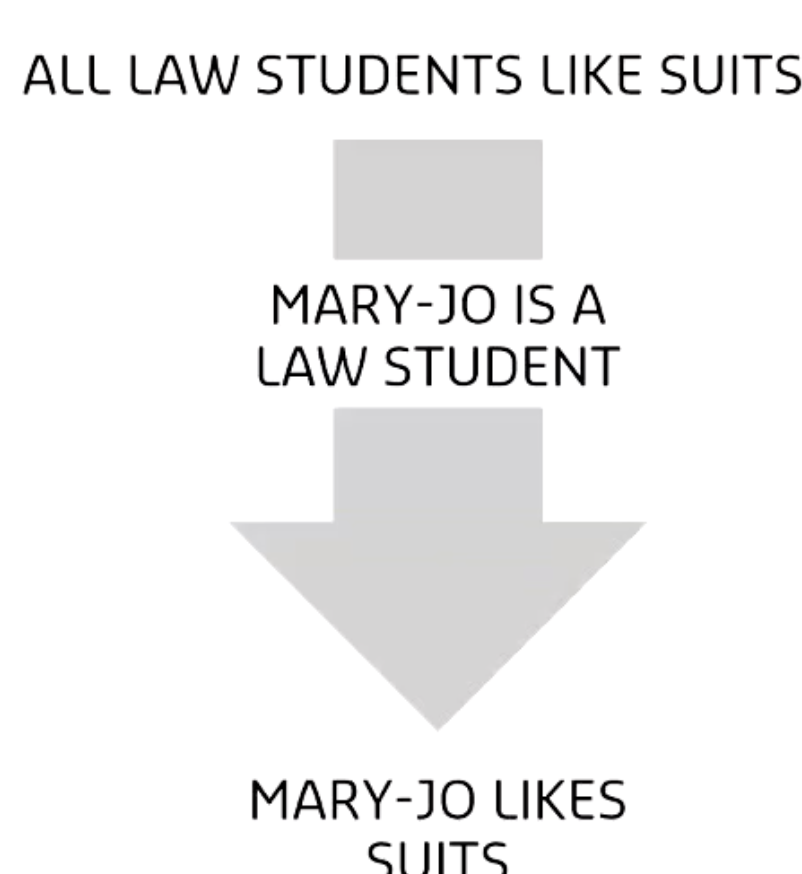
what is inductive reasoning
Extracting a general rule or principle from a number of decided cases which share some similarities to determine an appropriate outcome in a case;
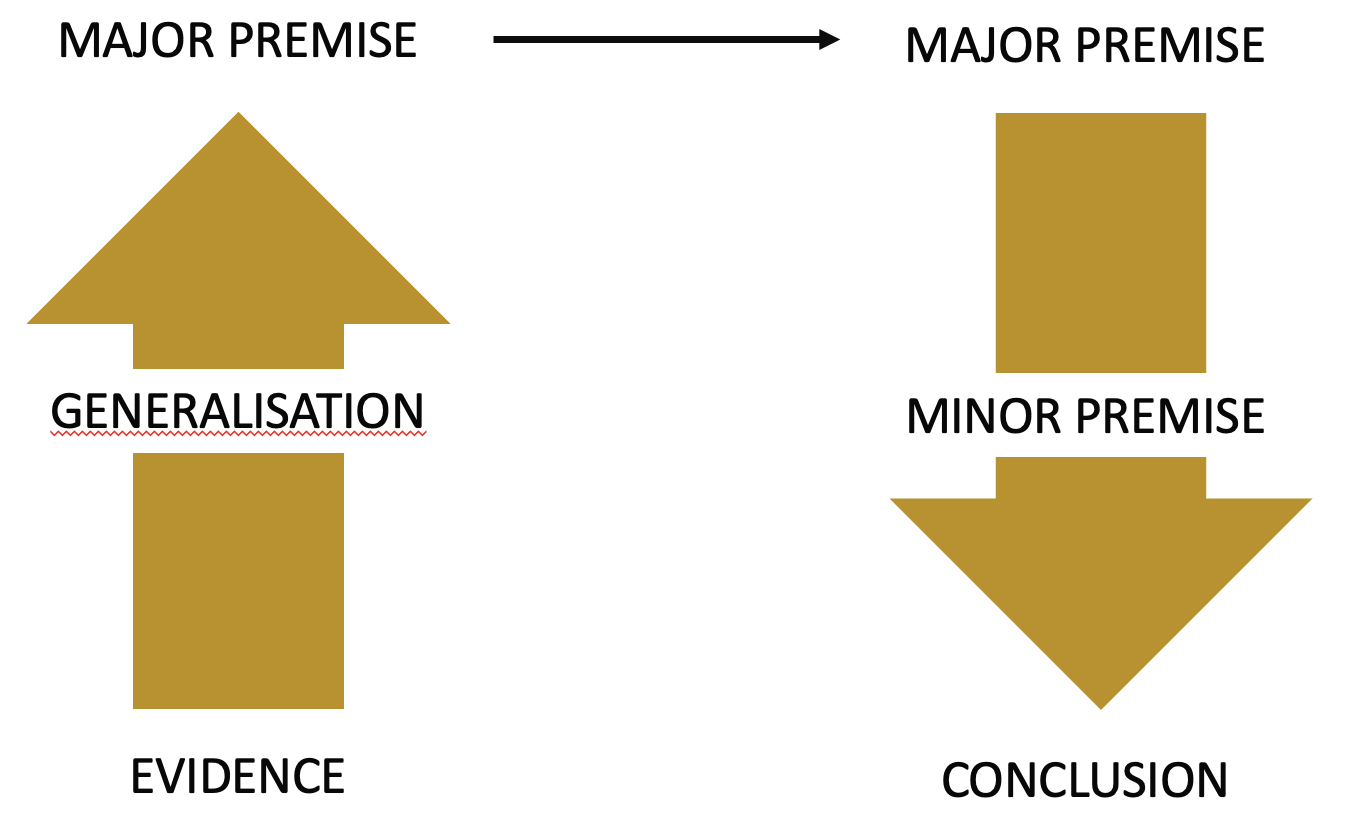
what is an example of inductive reasoning
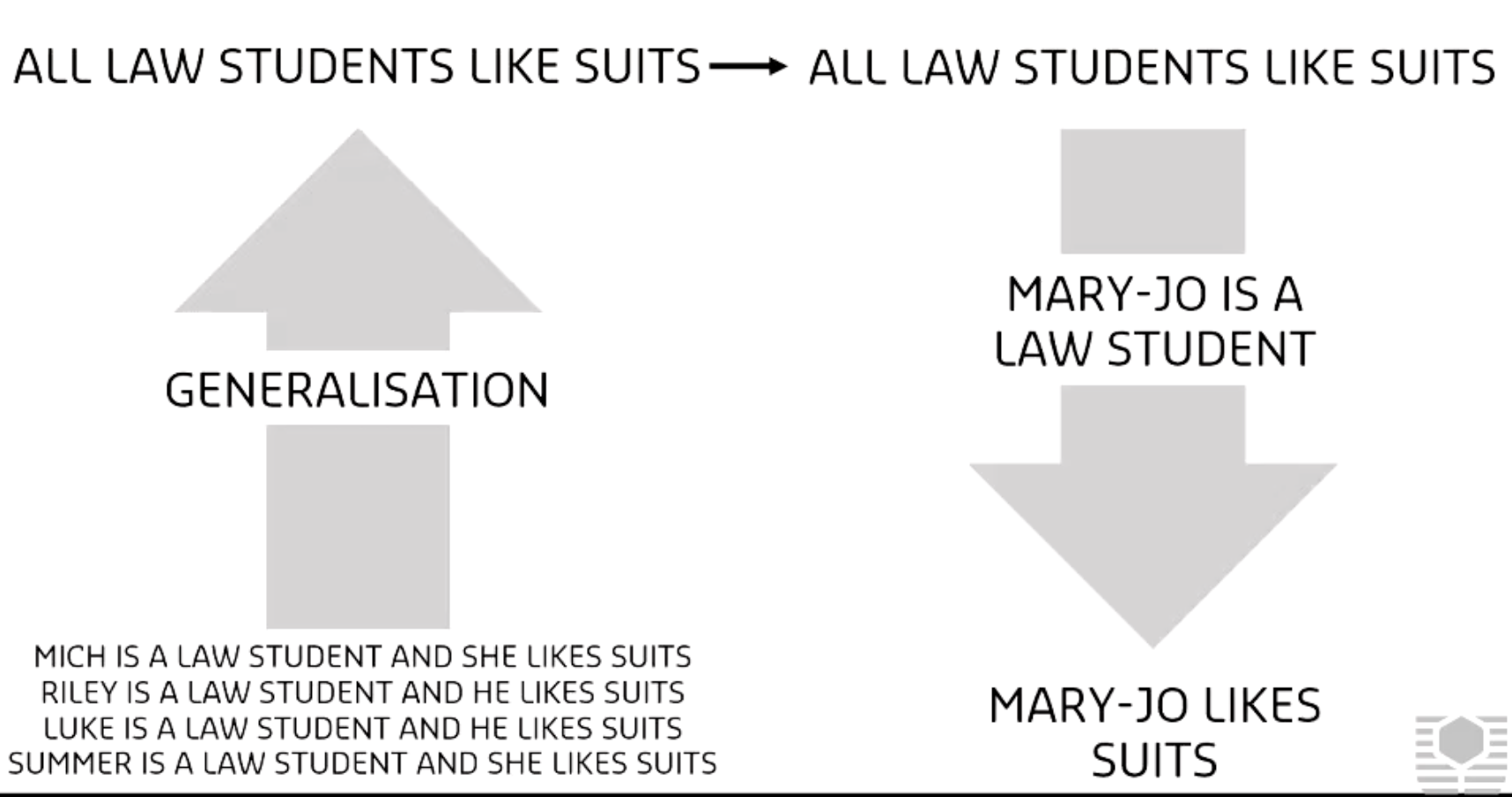
what is reasoning by analogy
(or ‘analogical reasoning’): Compare and contrast facts, policy or reasoning of one case with another. For example, arguing that a case is relatively similar to a previous case and should be decided in the same way (cases can also be distinguished on the basis of significant differences in the facts).
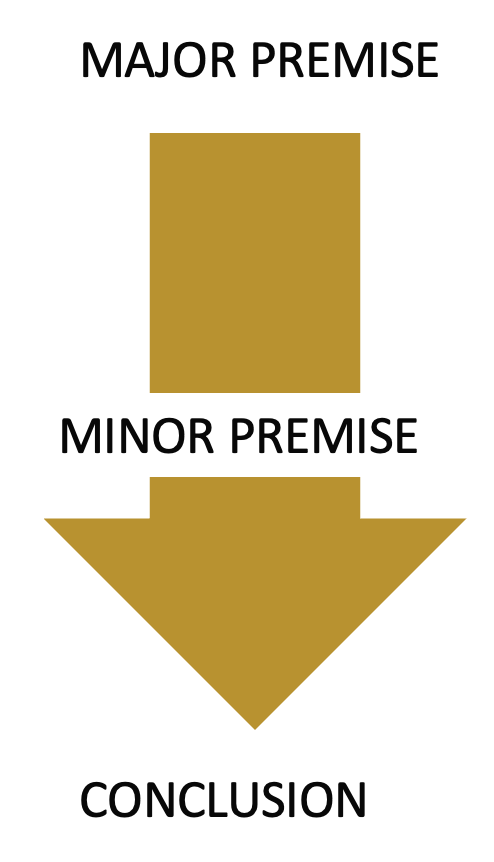
what is an example of reasoning by analogy

What is the form of legal reasoning and argument applied influenced by?
clarity of the existing law;
stage of the legal proceedings; and
position of the relevant court in the judicial hierarchy.
1. CLARITY OF THE EXISTING LAW
In circumstances where the law is clear and established, the process is quite straight forward – application of deductive reasoning and argument.
In this situation, the only real argument would be about the facts of the case.
This process is most commonly found in lower courts hearing routine matters.
In circumstances where the law is unclear and uncertain, the process is not as straight forward – it involves a mixture of inductive, deductive and comparative types of reasoning.
2. STAGE OF THE CIVIL LEGAL PROCEEDINGS
The basic stages of a civil legal proceeding are as follows:
advising the client;
preparation and getting up for trial;
alternative dispute resolution;
trial; and
potential appeal.
3. POSITION OF THE RELEVANT COURT IN THE JUDICIAL HIERARCHY
Courts exercising original jurisdiction must first determine the facts and then apply the law to those facts.
In this situation, the lawyers of each party present their legal reasoning and arguments.
The court must determine which lawyer’s analysis is preferable.
Generally, appellate courts take the facts as found. Their principal concern will be with the interpretation and application of the law to those established facts.
In this situation, the facts are taken as having been decided. The lawyers of each party present their interpretation of law and the court must determine which lawyer’s interpretation is preferable.
That is, ‘Rules x established Facts = Decision’.
what are the basic steps for legal reasoning?
Identify and interpret the relevant law (case law and legislation);
Identify (and prove with evidence) the key material facts; and
Apply the law to the facts to generate a conclusion.
LEGAL REASONING AND ARGUMENT: CASE LAW
Appears to be a mixture of inductive, deductive and analogical reasoning styles.
The law still have to be applied to the facts (deductively), but what are the laws?
To determine the law involves some aspect of inductive reasoning and the use of analogies to compare and contrast previous cases.
ARGUMENTS OF PRINCIPLE AND POLICY: IS THERE ANY PLACE FOR THEM?
“If that rule is clear and binding, the judge in our legal system usually applies it. And that is that.”
“If there is no apparent law on the subject, the judge is duty-bound to create it, based on past precedents.”
“Legal principle comes from an analysis of the emerging common themes of multiple decisions in connected areas of the law.”
“Where legal precept, precedent, authority and past principles offer an insufficient guide to solve a new problem in a just way, policy becomes essential to the decision-making of judges.”
Consideration of ‘principle’ and ‘policy’ may assist an appellate court to choose between two suggested legal rules.
examples of legal principles and policy consideration?
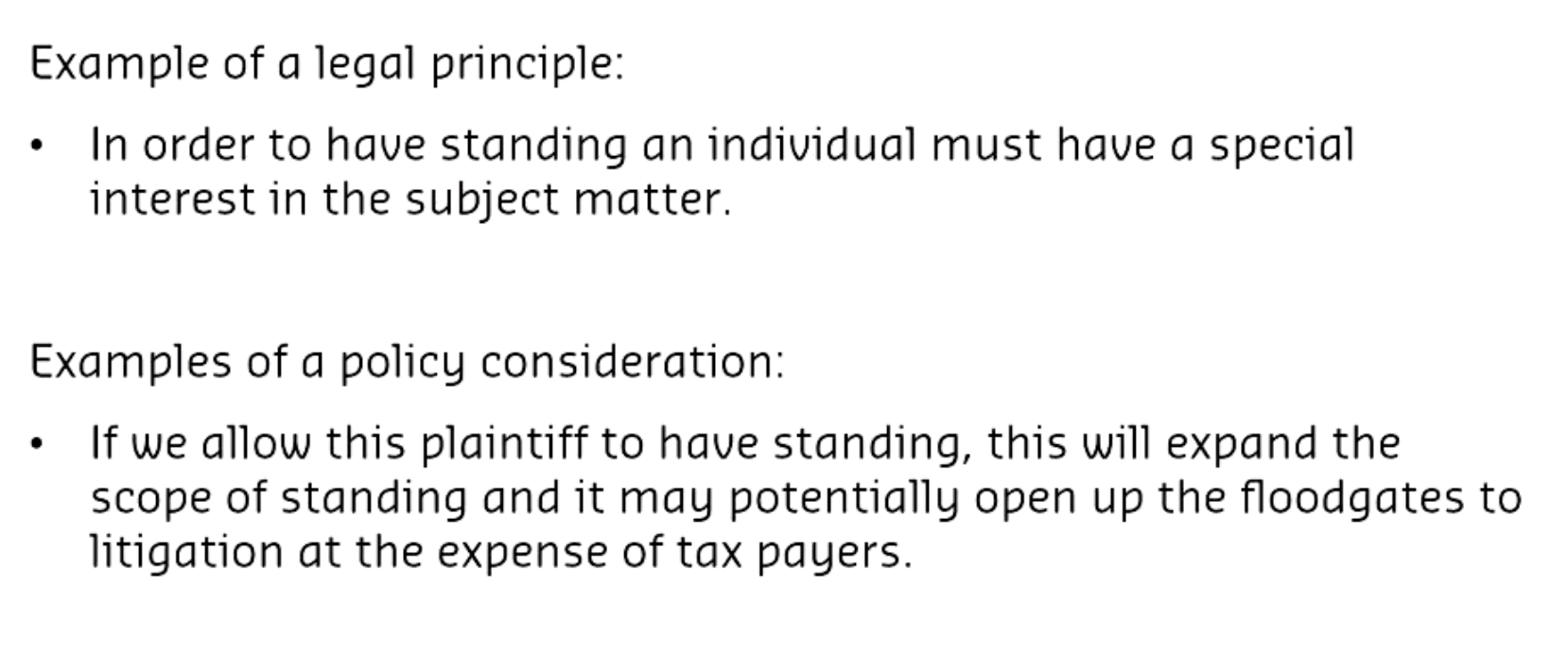
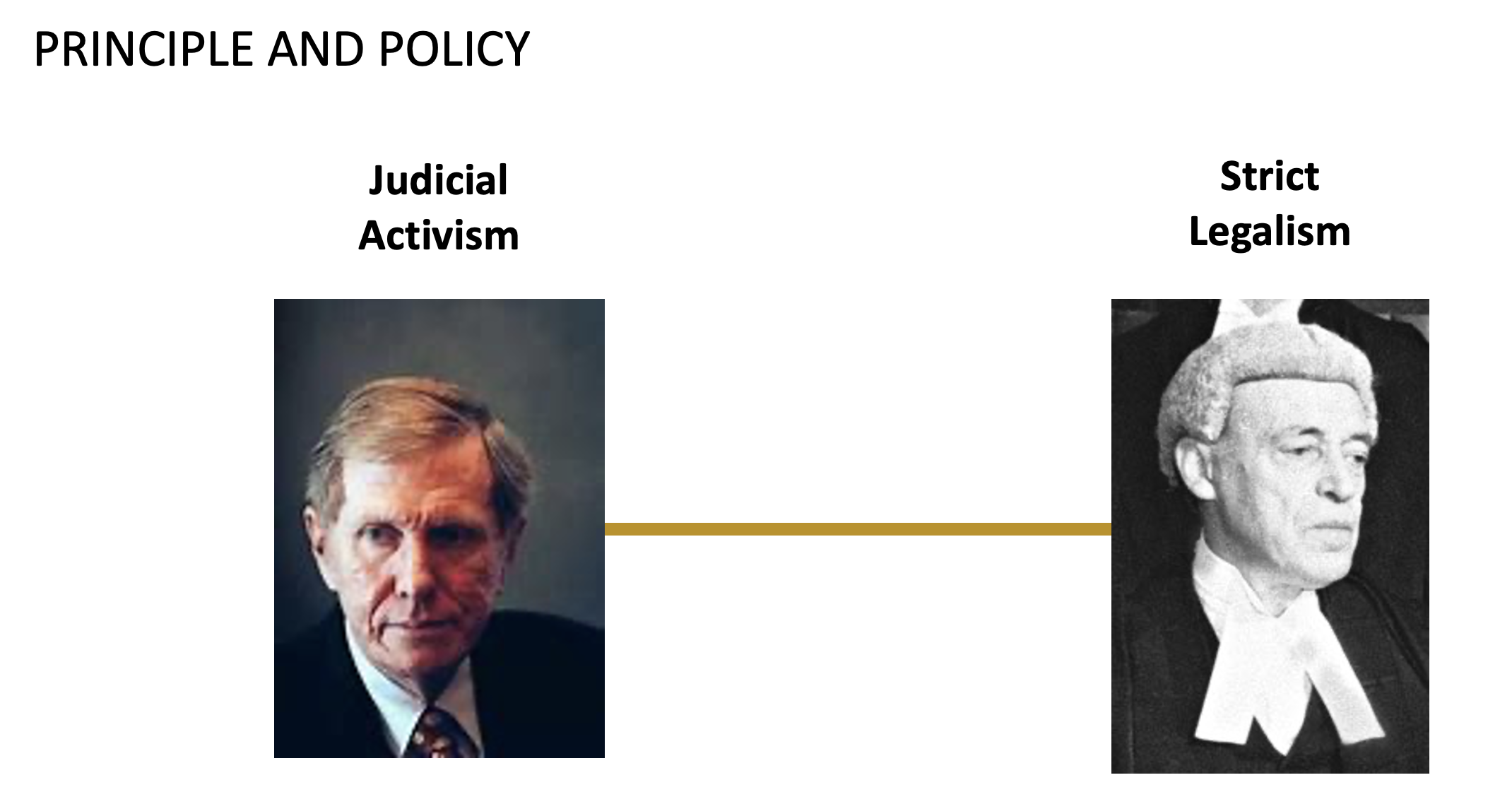
judicial activism include judges who are more readily accept that their lawmaking function and would be more likely to extend the law in light of changes in social or political attitudes of the community.
They're more likely to be swayed by policy considerations.
Whereas strict legalism identifies someone who strongly adheres to precedent and the strict application of the black letter law.